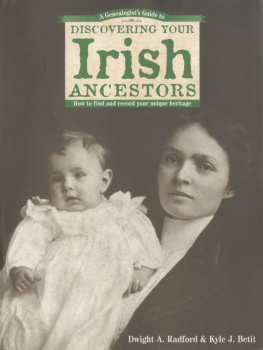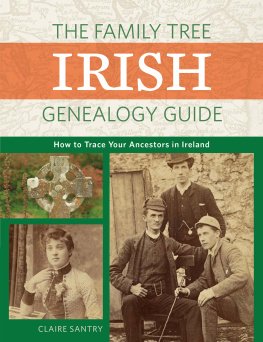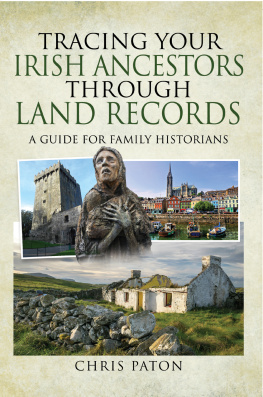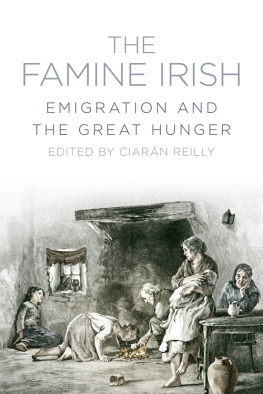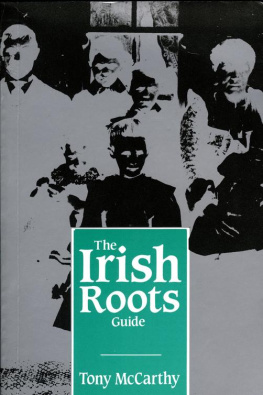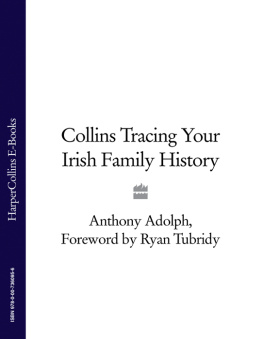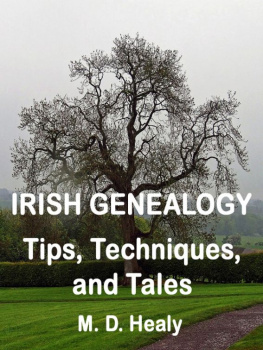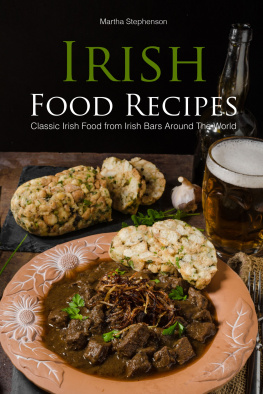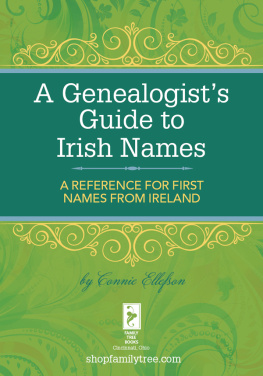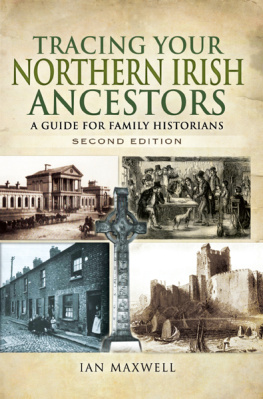We would both like to dedicate this book to James R. Reilly (19212000), our good friend and colleague and our strongest critic.
Acknowledgments
We would like to thank the many people who helped make this book possible. Since we strongly believe in the international aspect of Irish genealogy, we have asked key people around the world to preview our manuscript. Among them are Linda Clayton of Dublin, Ireland, a member of the Association of Professional Genealogists in Ireland and the Certified Genealogists Alumni Group, whose efficient research in Dublin records has helped us greatly; Gwen Reiher of the New Zealand Society of Genealogists, who taught us how important are the New Zealand branches of our Irish families; James R. Reilly, CGRS , who blessed us by transplanting himself from his home in Brooklyn, New York, to Salt Lake City, Utah, in his retirement years to seek out a better understanding of Irish genealogy sources; Rosemary Ardolina of Brooklyn, New York; Mary E. Noone of Boston, Massachusetts, who has been our kind host and a true friend over the years; Elizabeth Kelley Kerstens, cgrs , of the National Genealogical Society in Washington, DC, for her support and reviews; and the staff of the British Isles department of the Family History Library in Salt Lake City, Utah, for their encouragement, input, and consistent help, particularly reference consultants Judith Eccles Wight, ag , and Hazel M. Tibbits, ag.
We also would like to thank the following for their mentoring and assistance: David E. Rencher, AG , head of the Family History Library; Steven C. ffeary-Smyrl, probate researcher of Dublin, Ireland; Dr. Bruce S. Elliott of Carleton University, Ottawa, Ontario, Canada; Laura Hanowski of the Saskatchewan Genealogical Society; Perry C. McIntyre of the Society of Australian Genealogists; Patricia Keeney Geyh of the Irish Genealogical Society of Wisconsin; and Suzanne McVetty, CG , a genealogical writer and reseacher of Carle Place, New York. We have learned much from and been helped generously by a list of other colleagues and friends that would go on too long to include here. We are deeply grateful for all of their contributions.
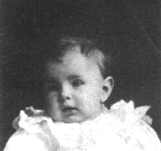
Table of Contents
Introduction
Our introduction explains how our book came to be written, whom it serves, and how best to use it.
1 What to Do: The Basic Strategies
While much of our book discusses information sources, this chapter focuses on some of the essential strategies you need to know to trace your Irish roots. Your strategies will depend on what, if anything, you already know about where in Ireland your ancestors came from.
2 United States
The subject of this chapter is how to research Irish immigrants who settled in the United States. It includes discussions of the most important records in which they can be found.
3 Canada
Researching Irish immigrants who settled in Canada is the focus of this chapter. We discuss sources and strategies for determining where in Canada an Irish ancestor settled, what records were left, and how to find out about Irish origins.
4 Australia
Many Irish men and women were forcibly transported to Australia, while others went in free settlement schemes. This chapter details the many excellent records, the admirable indexing projects, and how Australian research may hold the key to your Irish origins.
5 New Zealand,
The focus of this chapter is the more important records that can be used to trace Irish immigrants who settled in New Zealand.
6 Great Britain,
Many Irish immigrants made new homes in England, Scotland, and Wales, especially in the nineteenth century. Often they were temporary residents who later moved to another country such as Australia or the United States. In this chapter we discuss sources for tracing the Irish in Great Britain.
7 The British West Indies
Islands in the Caribbean were British colonies where numerous Irish settled, particularly in the 1600s. Often they traveled on to somewhere else, such as the American colonies. The records of the British West Indies can be essential to tracing these immigrants origins.
8 An Introduction to Irish Research
Here we discuss some of the basic questions, such as: What can I expect from Irish research? How far back in time can I trace my Irish family? How does Protestant Irish research differ from Catholic Irish research?
9 Administrative Divisions and Place Names: The Key to Irish Research
Two essential aspects of Irish research form the content of this chapter: First, we explain the various administrative divisions you need to be familiar with to use Irish records. Second, we give sources for locating Irish place names, including the more obscure ones.
10 Cemetery Records
This chapter describes how to locate a graveyard in Ireland as well as how to find tombstone transcripts.
11 Censuses and Name Lists
The focus of this chapter is on the surviving Irish censuses (the first complete one being from 1901) as well as other name lists that can substitute for censuses.
12 Church Records
In this chapter we describe the major research sources available for religious denominations in Ireland, including the Roman Catholic Church, the Church of Ireland (Anglican), Presbyterianism, Methodism, and other, smaller denominations.
13 Civil Registration
Registration of births, marriages, and deaths beginning in 1864 (1845 for Protestant marriages) is the subject of this chapter. We describe the content of the records and where they are available.

